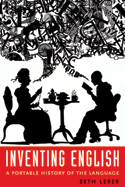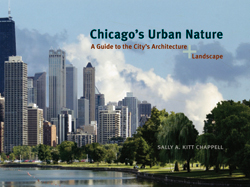Peer Review ::
On the shelf
The Magazine publishes a selection of general-interest books by alumni authors. For additional alumni books, see “In Their Own Words.”
Silence and Freedom, by Louis Michael Seidman, AB’68, Stanford University Press, 2007. Americans’ right to keep quiet, solidified by Supreme Court decisions like Miranda v. Arizona, is a significant, if peculiar, expression of human freedom, according to Seidman, a Georgetown University law professor. Religious martyrs, people who refused to testify during the McCarthy era, and Vietnam War draft resisters provide examples of silence’s power. Seidman also looks at government torture policies, which he sees as manipulating the body to overcome silence in an unacceptable extension of state power.
Diaspora Conversions: Black Carib Religion and the Recovery of Africa, by Paul Christopher Johnson, AM’90, PhD’97, University of California Press, 2007. In the past 50 years, one-third of the Garifuna, a Central American ethnic group of African and Amerindian descent, immigrated to New York City. Johnson’s comparative ethnography focuses on spirit-possession rituals in both Honduras and New York to understand how Garifuna customs have crossed national boundaries.
The Chicago Guide to Landing a Job in Academic Biology, by C. Ray Chandler, Lorne M. Wolfe, and Daniel E. L. Promislow, AB’86, University of Chicago Press, 2007. For biology graduate students and postdocs facing the daunting task of finding gainful employment, this guide offers tips ranging from how to avoid a wrinkled suit to how to find work at both large and small institutions.

Freeing Tammy: Women, Drugs, and Incarceration, by Jody Raphael, JD’69, Northeastern University Press, 2007. Her adolescence marred by sexual assault, Tammara Johnson left home, began a 19-year heroin addiction, and was falsely convicted of dealing drugs. Raphael, DePaul University College of Law researcher, tells Johnson’s story, the last in a trilogy about Chicago women fighting to survive violent, destitute circumstances. The author argues that eliminating violence is necessary to improve impoverished American women’s lives.

Inventing English: A Portable History of the Language, by Seth Lerer, PhD’81, Columbia University Press, 2007. Stanford professor Lerer traces the English language’s development starting with Caedmon, the first English poet whose name is known, through today. Alongside discussions of Shakespeare and the first dictionaries, Lerer uses Mark Twain to explore regional dialects and investigates the language’s global dominance as technology and economics drive its expansion.
Salt in the Sand: Memory, Violence, and the Nation-State in Chile, 1890 to the Present, by Lessie Jo Frazier, AB’89, Duke University Press, 2007. Throughout its history northern Chile has been a flash point for conflict, ranging from labor disputes to human-rights violations following the 1973 coup. Salt in the Sand examines the collective remembrance of this turbulence, including government-sponsored mass-grave excavations in 1990—attempts to resolve lingering Pinochet-era tensions.

Chicago’s Urban Nature: A Guide to the City’s Architecture + Landscape, by Sally A. Kitt Chappell, AM’63, University of Chicago Press, 2007. Complete with illustrations, this book looks at how Chicago planners have interwoven rural and urban environments. The University campus and nearby green spaces like Jackson Park provide a comparison with more recent attempts—such as Millennium Park—to integrate nature with the metropolis.
The Making of John Ledyard: Empire and Ambition in the Life of an Early American Traveler, by Edward G. Gray, AB’88, Yale University Press, 2007. Before he died at age 38, American explorer John Ledyard (1751–1789) traveled to Pacific islands, through America’s Northwest, and across Russia. Along the way he met some of the nation’s founders, Captain James Cook, and the Marquis de Lafayette. Gray looks at the connections between Ledyard’s life and the expansion of the British Empire, as well as America’s birth.
Miraculous Air: Journey of a Thousand Miles through Baja California, the Other Mexico, by C. M. Mayo, AB’82, AM’85, Milkwood Editions, 2007. Beginning at Cabo San Lucas—Baja’s southernmost tip—Mayo travels up through Mexico’s western peninsula, recording its everyday life, tourist attractions, and history of indigenous tribes, missionaries, and partitions that distinguishes it from both America and Mexico. In the process she gets to know Baja’s surfers, the city of Tijuana, and the peninsula’s turtle-processing plants.
Flannery O’Connor, Walker Percy, and the Aesthetic of Revelation, by John D. Sykes, AM’76, University of Missouri Press, 2007. O’Connor and Percy shared an interest in sacrament and revelation, which drove them to break with the historical, memory-based tradition of previous Southern writers. But their shared Catholic roots, Sykes argues, led them down separate literary paths: O’Connor’s development of stark images and Percy’s attempts to foster dialogue with his readers.